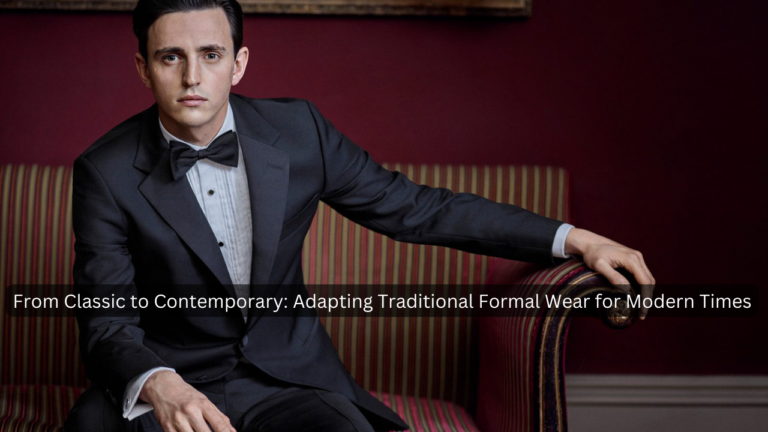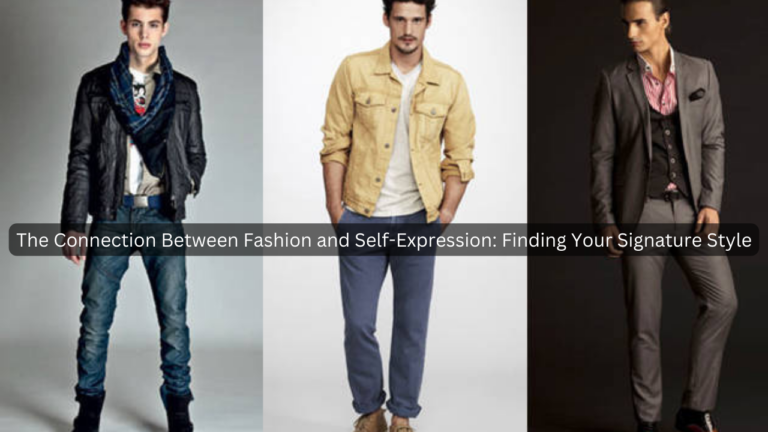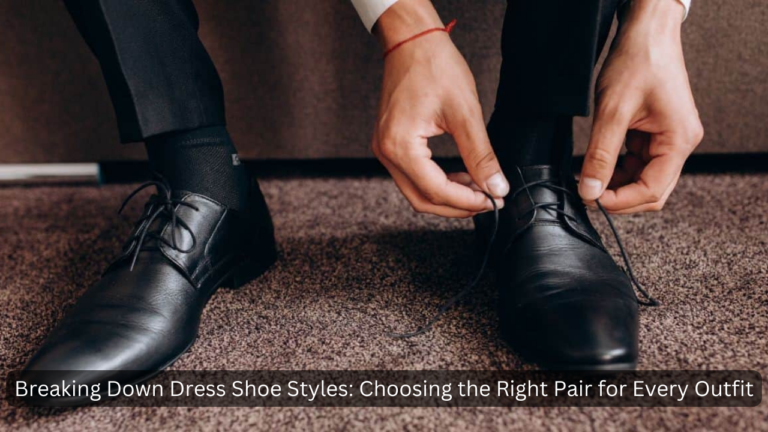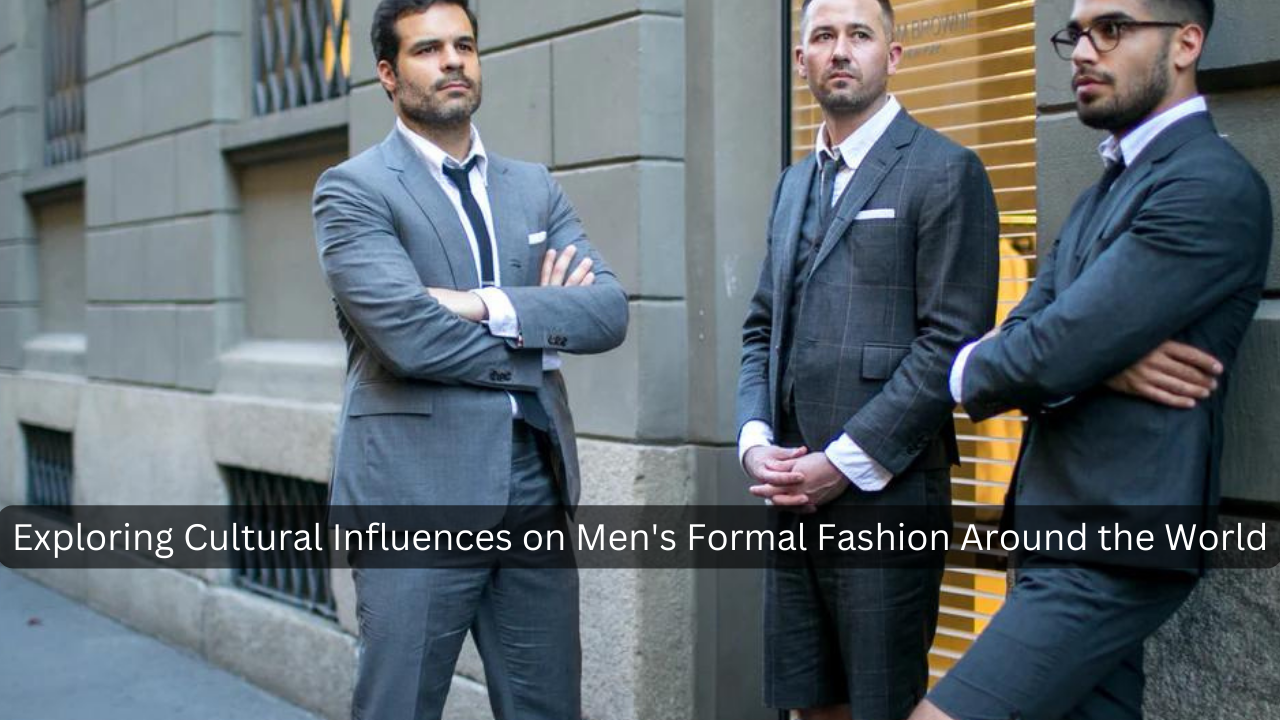
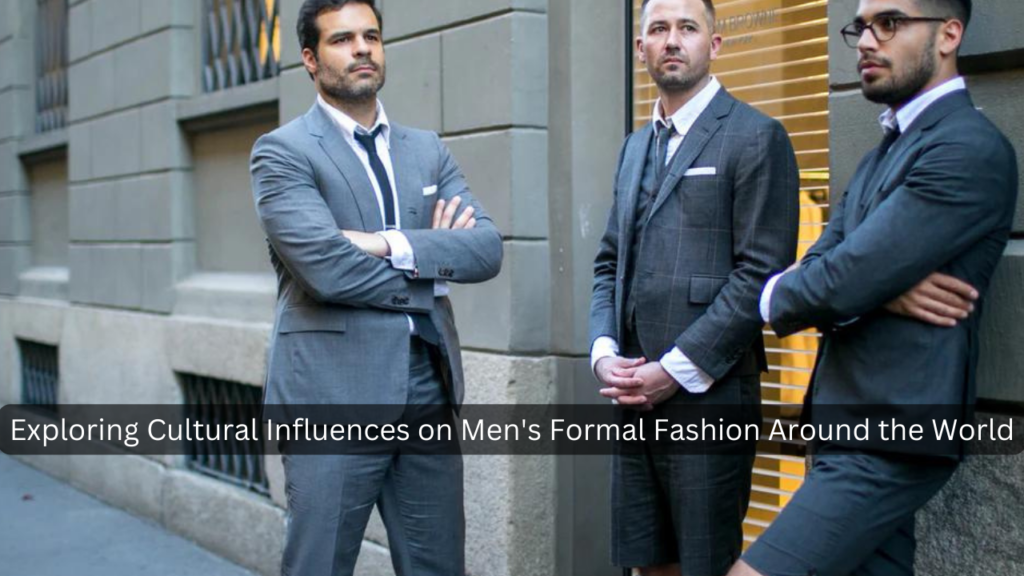
Table of Contents
Introduction
Fashion is more than just clothing; it is a reflection of culture, history, and identity. Across the globe, the way people dress in formal settings tells a story of tradition, innovation, and societal norms. Understanding the cultural influences woven into Men’s Formal Fashion Around the World provides a unique lens through which to appreciate the diversity and richness of our world.
Importance of Understanding Cultural Influences in Fashion
Cultural influences shape every aspect of fashion, from the materials used to the designs crafted and the meanings imbued in every stitch. By exploring these influences, we gain insight into how societies express values, celebrate heritage, and adapt to change. Fashion becomes a language through which traditions are preserved, identities are asserted, and creativity flourishes.
Brief Overview of the Article’s Focus on Men’s Formal Fashion
In this article, we delve into the intricate tapestry of men’s formal fashion, exploring how cultures around the world influence and redefine what it means to dress formally. From timeless traditions in ceremonial attire to the global impact of Western suits, we examine the evolution of formal wear through a cultural lens. By examining regional variations, iconic figures, and emerging trends, we aim to showcase the dynamic interplay between tradition and modernity in men‘s formal fashion worldwide.
This framework sets the stage for a deep exploration of how cultural heritage shapes the clothes we wear, inviting readers to appreciate the depth and diversity of men’s formal fashion across different cultures.
Western Influences
Historical Evolution of Men’s Formal Wear in Europe
Men’s formal wear in Europe has evolved significantly over centuries, influenced by historical events, social status, and cultural shifts. The roots of formal attire trace back to medieval times, where garments like tunics and robes distinguished nobility from commoners. As European societies progressed, so did their fashion sensibilities, culminating in the Renaissance period when elaborate doublets, hose, and codpieces became symbols of wealth and status.
The 17th and 18th centuries marked a refinement of formal wear, with the emergence of tailored suits and the adoption of wigs and cravats. These styles reflected the growing influence of courtly etiquette and the rise of aristocratic fashion. By the 19th century, the Industrial Revolution democratized fashion to some extent, making tailored suits more accessible while retaining their association with refinement and authority.
Impact of British and American Styles on Global Fashion Trends
British and American styles have had a profound impact on global fashion trends, particularly in men’s formal wear. The British influence, epitomized by the Savile Row bespoke tailoring tradition, introduced the world to impeccably crafted suits tailored to individual measurements. This tradition not only set a standard for quality and fit but also emphasized the importance of tradition and craftsmanship in formal attire.
Similarly, American styles, characterized by their pragmatic approach and business-oriented aesthetics, popularized the “power suit” in the mid-20th century. The clean lines, dark colors, and minimalist designs of American suits became synonymous with professionalism and success, influencing corporate attire worldwide.
Together, British and American styles have shaped contemporary global fashion by blending classic elegance with modern functionality. Their influence continues to resonate in the diverse landscapes of men’s formal fashion, illustrating how cultural heritage can transcend borders and shape sartorial choices worldwide.
Asian Perspectives
Traditional Formal Attire in Countries like Japan, China, India, etc.
Asia boasts a rich tapestry of traditional formal attire, each country weaving its unique cultural heritage into garments that reflect history, values, and societal roles.
Japan: The kimono stands as a timeless symbol of Japanese culture, worn for formal occasions such as weddings and tea ceremonies. Its intricate patterns and subdued colors convey elegance and understated refinement, embodying centuries-old craftsmanship and aesthetic principles.
China: The traditional Chinese attire for men, known as the Hanfu or Qipao (for men), varies across dynasties and regions. These garments often feature intricate embroidery, silk fabrics, and mandarin collars, symbolizing cultural pride and status.
India: In India, traditional formal wear for men includes the majestic sherwani, often adorned with intricate embroidery, embellishments, and vibrant colors. Paired with a turban and accessories like a sword or shawl, the sherwani embodies royalty and cultural heritage, worn during weddings and festive occasions.
Fusion of Traditional and Modern Elements in Asian Formal Wear
Asian formal wear has evolved with the times, blending traditional aesthetics with contemporary influences to cater to modern lifestyles and global trends.
Japan: Modern interpretations of the kimono blend traditional craftsmanship with contemporary designs, incorporating bold colors, unconventional fabrics, and streamlined silhouettes. This fusion caters to younger generations while preserving cultural authenticity.
China: Contemporary Chinese formal wear integrates Western tailoring techniques with traditional motifs and fabrics. Qipao-inspired suits for men, featuring Mandarin collars and intricate detailing, exemplify this harmonious blend of old and new.
India: The sherwani has evolved to accommodate changing tastes and global influences, with designers experimenting with cuts, fabrics, and embellishments. Fusion ensembles like Indo-Western sherwanis combine traditional silhouettes with Western elements, appealing to a global audience while celebrating Indian craftsmanship.
By embracing innovation while honoring heritage, Asian formal Wardrobe wear continues to captivate audiences worldwide, showcasing the enduring allure of cultural diversity and creativity in men’s fashion.
African Elegance
Rich Diversity of Formal Attire Across African Cultures
Africa boasts a rich tapestry of cultures, each contributing to a vibrant array of formal attire that reflects history, spirituality, and societal roles.
West Africa: The grand boubou, characterized by its flowing robes and elaborate embroidery, is a staple of formal wear across West Africa. Worn during ceremonies and important gatherings, the boubou showcases regional variations in colors, patterns, and designs that signify ethnic identity and social status.
East Africa: In East Africa, the kanzu is a traditional formal garment worn by men, particularly during weddings and religious ceremonies. This ankle-length tunic, often accompanied by a kofia (cap), features intricate embroidery and reflects the region’s cultural diversity through variations in style and embellishment.
Southern Africa: The tailored suit has gained prominence in Southern Africa, blending Western influences with local aesthetics. Vibrant colors, geometric patterns, and traditional fabrics like shweshwe are often incorporated into suits and jackets, offering a contemporary twist on formal wear while celebrating indigenous craftsmanship.
Use of Textiles, Colors, and Patterns in African Men’s Formal Fashion
Textiles play a pivotal role in African men’s formal fashion, with each fabric carrying its own cultural significance and story.
Textiles: Fabrics such as kente from Ghana, mudcloth from Mali, and kitenge from East Africa are revered for their craftsmanship and symbolic meanings. These textiles are meticulously woven or printed with intricate patterns that convey messages of heritage, identity, and spirituality.
Colors: Bold and vibrant hues dominate African formal wear, symbolizing vitality, prosperity, and cultural pride. Colors like red, gold, and blue are often chosen for their symbolic meanings and their ability to evoke a sense of celebration and unity.
Patterns: Geometric shapes, animal motifs, and abstract designs feature prominently in African textiles, each pattern carrying its own narrative and cultural significance. These patterns are not merely decorative but serve as visual language, communicating lineage, status, and personal style beliefs.
Through its diverse formal attire, Africa showcases an unparalleled richness of cultural expression, where textiles, colors, and patterns converge to create garments that celebrate heritage while embracing contemporary influences. This fusion of tradition and innovation underscores Africa’s enduring legacy in global fashion and its profound impact on men’s formal wear.
Latin American Styles
Influence of Spanish and Indigenous Cultures on Formal Wear
Latin American formal wear is a vibrant tapestry woven from the influences of Spanish colonial heritage and indigenous traditions, reflecting a blend of history, identity, and artistic expression.
Spanish Influence: The legacy of Spanish colonization left an indelible mark on Latin American fashion, particularly in formal attire. Traditional Spanish garments such as the charro suit in Mexico or the guayabera shirt in Cuba and other countries have been adapted and integrated into local dress codes for formal occasions. These garments often feature intricate embroidery, elaborate detailing, and a structured silhouette that speaks to Spanish aristocratic influences.
Indigenous Influences: Indigenous cultures across Latin America have also contributed significantly to formal wear, incorporating traditional textiles, motifs, and craftsmanship into contemporary styles. Garments like the poncho in Andean countries or the huipil in Mexico and Central America showcase indigenous weaving techniques, vibrant colors, and symbolic patterns that convey cultural heritage and identity.
Vibrant Colors and Craftsmanship in Latin American Formal Attire
Latin American formal attire is renowned for its vibrant colors and exquisite craftsmanship, which body the region’s passion for cultural expression and artistic flair.
Colors: Bold and vivid hues such as deep reds, bright blues, rich greens, and sunny yellows dominate Latin American formal wear, symbolizing energy, joy, and cultural pride. These colors evoke the landscapes, traditions, and festivities that define the region’s cultural identity.
Craftsmanship: Craftsmanship is at the heart of Latin American formal attire, with artisans employing traditional techniques passed down through generations. Embroidery, weaving, and intricate beadwork adorn garments with meticulous detail, creating textures and patterns that narrate stories of resilience, creativity, and community.
Latin American formal wear exemplifies a harmonious fusion of Spanish elegance and indigenous vibrancy, where colors and craftsmanship converge to celebrate heritage and convey a sense of occasion. This cultural tapestry not only showcases Latin America’s rich diversity but also highlights its enduring influence on global fashion trends, making a bold statement that resonates with authenticity and creativity.
Middle Eastern Traditions
Significance of Robes, Tunics, and Headwear in Formal Contexts
Middle Eastern formal fashion is steeped in tradition, where garments like robes, tunics, and distinctive headwear play a crucial role in expressing cultural identity and societal roles.
Robes and Tunics: The thobe (or dishdasha) and kandura are traditional robes worn by men across the Middle East, varying in style and design according to regional customs. These garments, often made from lightweight fabrics suited to the desert climate, symbolize modesty, dignity, and respect. They are commonly worn for formal occasions such as weddings, religious ceremonies, and official gatherings, embodying a blend of heritage and contemporary elegance.
Headwear: Headwear holds significant cultural and religious symbolism in Middle Eastern formal attire. The keffiyeh, ghutra, and agal are iconic head coverings worn across the region. The keffiyeh, traditionally worn in Palestine and Jordan, features distinctive checkered patterns and is secured in place by an agal, a circular band. The ghutra, commonly worn in Gulf countries, signifies protection from the sun and sand, while the agal symbolizes dignity and tradition.
Cultural Symbols and Meanings Embedded in Middle Eastern Formal Fashion
Middle Eastern formal fashion is rich with cultural symbols and meanings, reflecting a deep-rooted connection to heritage, faith, and community.
Symbols: Patterns and motifs on garments often carry symbolic meanings in Middle Eastern culture. Geometric designs, floral patterns, and calligraphic elements adorn fabrics, conveying messages of prosperity, spirituality, and unity. These symbols serve as visual language, communicating values and beliefs within the context of formal attire.
Meanings: Colors also hold significance in Middle Eastern formal wear. White, for example, symbolizes purity and peace, making it a popular choice for ceremonial robes. Rich hues such as royal blue, deep green, and burgundy are often associated with luxury, nobility, and celebration, reflecting the festive spirit of special occasions.
Middle Eastern formal fashion transcends mere attire; it is a testament to cultural continuity and identity. Through robes, tunics, and headwear adorned with symbols and meanings, individuals in the Middle East reaffirm their heritage and uphold traditions that have endured for centuries. This fusion of symbolism and style not only underscores the region’s cultural richness but also highlights its enduring influence on global fashion aesthetics.
Contemporary Global Trends
Impact of Globalization on Homogenizing or Diversifying Formal Fashion
Globalization has profoundly influenced the landscape of formal fashion, shaping trends through cultural exchange, technological advancements, and shifting societal norms.
Homogenization: One of the effects of globalization on formal fashion is the trend towards homogenization, where Western styles, such as tailored suits and business attire, have become ubiquitous across the globe. This standardization reflects a preference for efficiency and uniformity in professional settings, blurring cultural distinctions in favor of a globalized aesthetic.
Diversification: Conversely, globalization has also fueled the diversification of formal fashion by facilitating cross-cultural exchanges and collaborations. Traditional attire from diverse cultures, such as Japanese kimono adaptations, Indian sherwani influences, and African textile integrations, have found resonance in global fashion markets. This diversity celebrates cultural heritage while pushing boundaries of creativity and inclusivity in formal wear.
Popular International Designers and Their Cross-Cultural Inspirations
International designers play a pivotal role in shaping contemporary formal fashion by drawing inspiration from diverse cultural sources and infusing their designs with cross-cultural elements.
Ralph Lauren: Known for his iconic American style, Ralph Lauren often incorporates global influences into his collections. From Southwestern motifs to British tailoring traditions, Lauren’s designs blend diverse cultural inspirations to create timeless and sophisticated formal wear.
Dior: The French fashion house Dior has embraced cross-cultural inspirations under designers like Maria Grazia Chiuri, who has infused traditional Asian and African motifs into Dior’s haute couture and ready-to-wear lines. These collaborations celebrate global diversity while honoring craftsmanship and heritage.
Issey Miyake: Japanese designer Issey Miyake has redefined formal wear with innovative techniques and cross-cultural influences. His designs often feature minimalist aesthetics inspired by Japanese tradition and modern global trends, showcasing a harmonious blend of East and West.
These designers exemplify how cross-cultural inspirations can enrich and redefine formal fashion, bridging continents and traditions to create garments that resonate with a global audience. Their contributions highlight the dynamic interplay between tradition and innovation in contemporary global fashion trends, reflecting a world where cultural exchange and creativity converge to shape the future of formal wear.
Conclusion
Men’s Formal Fashion Around the World is a testament to the diverse cultural tapestry that spans the globe, each thread weaving together history, tradition, and identity. Throughout this exploration, we have witnessed how different cultures shape and redefine formal attire, reflecting unique values, customs, and societal roles.
From the refined elegance of Western suits influenced by European aristocracy to the vibrant colors and intricate craftsmanship of African attire, formal fashion serves as a canvas where cultural narratives unfold. Traditional garments like the Japanese kimono, Indian sherwani, and Middle Eastern robes not only embody centuries-old traditions but also adapt to modern sensibilities, illustrating the resilience and adaptability of cultural heritage.
The evolution of Men’s Formal Fashion Around the World mirrors the evolving nature of cultural identity itself. As globalization fosters greater interconnectedness, formal wear has both homogenized and diversified, blending global influences with local traditions. This dynamic fusion celebrates diversity while fostering cross-cultural understanding and appreciation.
Clothing is more than mere adornment; it is a language of expression, communicating heritage, beliefs, and aspirations. As we embrace the future of formal fashion, we are reminded of its profound ability to transcend borders, unite communities, and affirm cultural pride. By honoring and preserving diverse traditions, we ensure that men’s formal fashion continues to serve as a canvas for cultural expression and a reflection of our shared humanity.
